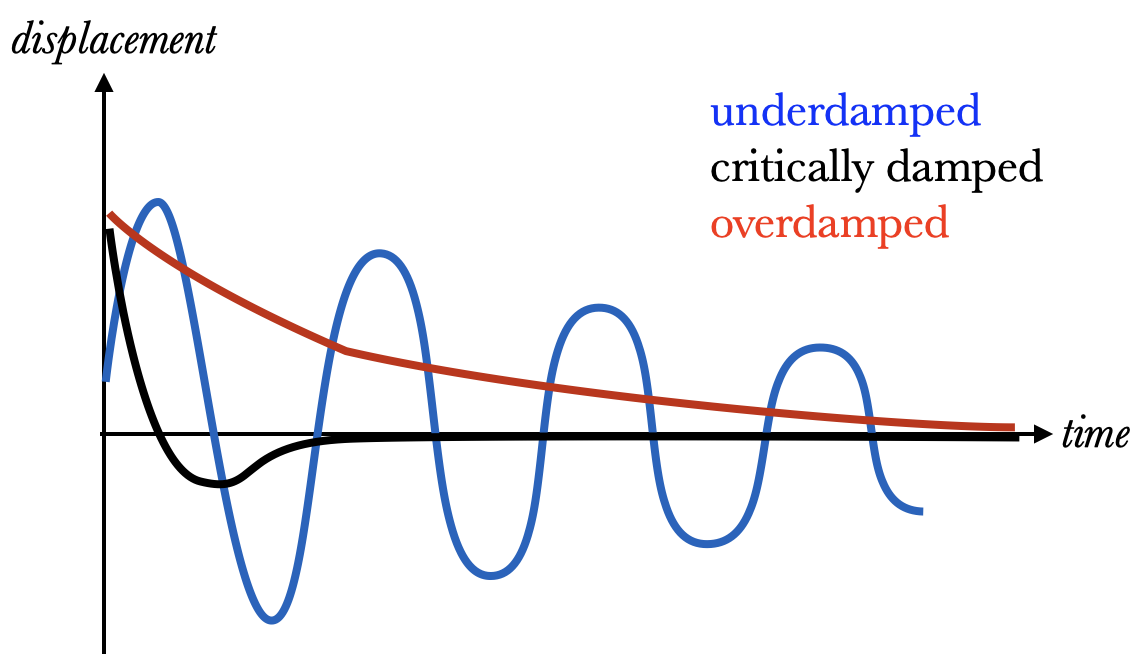Damped Oscillation
Without friction, an oscillator will continue oscillating forever, and its total energy will remain constant. In practice, of course, there is always some friction, which will bleed the energy away until the oscillator comes to a stop. This is called damped oscillation.
If the amount of damping is small, then the oscillator will go through several or perhaps many cycles before it basically comes to a stop. We call this an underdamped oscillator. if the amount of damping is large, on the other hand, then the oscillator won't oscillate at all, but will slowly return to its equilibrium point and stay there. This is an overdamped oscillator. Why "over"damped? Because while the oscillator doesn't oscillate, it does take a long time to return to the equilibrium point. In between these two is critical damping, in which the oscillator returns quickly to the equilibrium point, not quite completing one cycle. This is the ideal situation for a car suspension system, for instance: once you go over a bump, you want the car to return to normal as soon as possible.